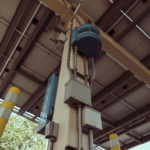
Ultimate Guide to Understanding Aluminum Gravity Casting
- 0
Welcome to the realm of aluminum gravity casting, where innovation converges with precision! This ultimate guide unlocks the secrets behind the creation of intricately detailed and strong metal objects using the fascinating process of aluminum gravity casting. Whether you’re a seasoned industry professional or just someone curious about manufacturing, this article is your gateway to comprehending and marveling at the artistry of aluminum gravity casting. Join us on this journey into the remarkable world of this casting technique!
What is Aluminum Gravity Casting?
Aluminum gravity casting is a manufacturing technique that involves pouring molten aluminum into a pre-designed mold using gravity, without relying on external pressure or centrifugal force. This method allows for intricate designs with minimal defects.
The process starts with creating a mold from materials like steel or sand, heated to a specific temperature, and coated with a release agent. Molten aluminum is then poured into the mold through a sprue, filling every detail of the shape. As the metal cools and solidifies, it takes on the mold’s exact form.
One key advantage is the ability to produce complex geometries without compromising strength. The high fluidity of molten aluminum allows for the accurate replication of intricate patterns and fine details in each cast.
Aluminum gravity casting also offers excellent dimensional accuracy and surface finish, requiring minimal post-processing. Its uniform structure and reduced porosity contribute to exceptional mechanical properties, making it ideal for applications requiring high-strength components.
Used in automotive, aerospace, and household appliances, aluminum gravity casting’s versatility, cost-effectiveness, and superior quality make it a sought-after choice for manufacturers worldwide. With this overview, let’s delve deeper into the fascinating process of aluminum gravity casting!
The Process of Aluminum Gravity Casting
The process of aluminum gravity casting is a versatile and widely used method for creating high-quality aluminum parts. It involves pouring molten aluminum into a mold made from a heat-resistant material, such as steel or plaster.
- Pattern Making: Before creating the mold, a pattern is typically made, which is a replica of the final part. The pattern is used to create the mold cavity.
- Mold Design: The mold design is an important step in the process. It includes considerations for the part’s geometry, gating system (channels for the molten metal to flow into the mold), and cooling system.
- Alloy Selection: The choice of aluminum alloy is important and depends on the desired properties of the final part. Different alloys offer varying levels of strength, hardness, and other characteristics.
- Pouring and Solidification: During pouring, the molten aluminum must be carefully controlled to avoid turbulence, which could introduce defects. The solidification process is important for achieving the desired material properties.
- Heat Treatment: Some cast aluminum parts may undergo heat treatment to improve mechanical properties, such as strength and hardness.
- Quality Control: Throughout the process, quality control measures are implemented to ensure that the cast parts meet the specified standards. This may include mold inspection, pouring parameter monitoring, and post-casting inspections.
- Environmental Considerations: The process generates heat and emissions, and proper environmental controls are often in place to manage these aspects responsibly.
- Automation: In modern manufacturing, there’s an increasing trend toward automation in casting processes to improve efficiency, consistency, and reduce labor costs.
- Recycling: Aluminum is highly recyclable, and scrap generated during the casting process can be recycled and reused, contributing to the overall sustainability of the process.
Overall, aluminum gravity casting is indeed a versatile and widely used method with a broad range of applications across industries. It provides an efficient and cost-effective way to produce high-quality aluminum parts with complex shapes and details.
Benefits of Aluminum Gravity Casting
Aluminum gravity casting offers a range of benefits that make it an attractive choice for many manufacturing applications.
- Precision Engineering: The ability to produce intricate designs and components with tight tolerances is important in industries where performance and reliability are important. Aluminum gravity casting excels in delivering precision and detail, ensuring that complex shapes can be replicated accurately.
- Durable Lightweight Components: The combination of strength and lightness in aluminum castings is a standout feature. This is particularly advantageous in sectors like aerospace and automotive, where reducing overall weight contributes to improved fuel efficiency, performance, and overall sustainability.
- Corrosion Resistance for Outdoor Applications: The natural oxide layer that forms on the surface of aluminum not only protects it from corrosion but also makes it an excellent choice for components exposed to outdoor environments. This is a key factor in ensuring the longevity and reliability of parts in various applications.
- Efficiency in Production: The minimal tooling investment and shorter lead times associated with aluminum gravity casting contribute to overall cost-effectiveness. This production efficiency is essential for meeting tight deadlines and managing production costs.
- Sustainability through Recycling: The ability to recycle aluminum repeatedly without compromising its properties aligns well with sustainability goals. It not only reduces the environmental impact associated with manufacturing but also contributes to the conservation of resources.
In conclusion, aluminum gravity casting stands out as a comprehensive solution for industries that prioritize quality, efficiency, and environmental responsibility. Its adaptability to various applications, from intricate engine parts to aerospace components, makes it a go-to choice for manufacturing high-performance components.
Applications of Aluminum Gravity Casting
Application #1: Automotive Industry
Components like engine blocks, cylinder heads, transmission cases, and intake manifolds contribute to lightweight and fuel-efficient automotive designs.
Application #2: Aerospace Industry
Utilized in aircraft engine housings, turbine blades, wing brackets, and landing gear components due to the material’s high strength-to-weight ratio.
Application #3: Electrical Equipment
Manufacturers in the electrical industry rely on aluminum gravity castings for heat sinks, enclosures, connectors, and components requiring excellent thermal conductivity and electrical insulation.
Application #4: Industrial Machinery
Various machinery components such as pumps, valves, compressors, and hydraulic systems benefit from the precision and durability of aluminum gravity castings.
Application #5: Consumer Goods
Found in kitchen appliances, sporting goods, and furniture hardware, aluminum gravity castings provide durability and an appealing appearance for consumer products.
Application #6: Medical Equipment
Utilized in the medical field for manufacturing surgical instruments, prosthetics, and imaging equipment, benefiting from the material’s lightweight yet robust properties.
Application #7: Energy Sector
Chosen in renewable energy applications like wind turbines, solar panels, and hydropower plants due to corrosion-resistant properties, enabling it to withstand harsh weather conditions.
Application #8: Railways
The railway industry relies on aluminum gravity casting for constructing rail carriages, bogies, and tanks, leveraging the material’s properties for robust and lightweight components.
The widespread adoption of aluminum gravity casting underscores its suitability for producing diverse components across various industries, meeting a wide range of requirements.
Factors to Consider Before Choosing Aluminum Gravity Casting
Before opting for aluminum gravity casting, several essential factors need to be taken into account.
- Complexity of Design: Aluminum gravity casting is best for simpler designs; if your project involves complex shapes, die casting may be more suitable.
- Size and Weight: Ideal for smaller to medium-sized parts; for larger or heavier products, consider alternative processes like sand casting.
- Surface Finish and Dimensional Accuracy: Aluminum gravity casting offers a good surface finish but may have less precision compared to high-pressure die casting.
- Cost-Effectiveness and Production Volume: While aluminum gravity casting has lower tooling costs, per-unit costs may be higher due to longer cycle times; consider production volume requirements.
- Material Properties: Evaluate the specific material properties required for your application; aluminum offers corrosion resistance and lightweight properties but may not have the same strength as other metals.
By carefully assessing these factors, you can make an informed decision that aligns with your project’s needs, ensuring optimal results from the aluminum gravity casting process.






